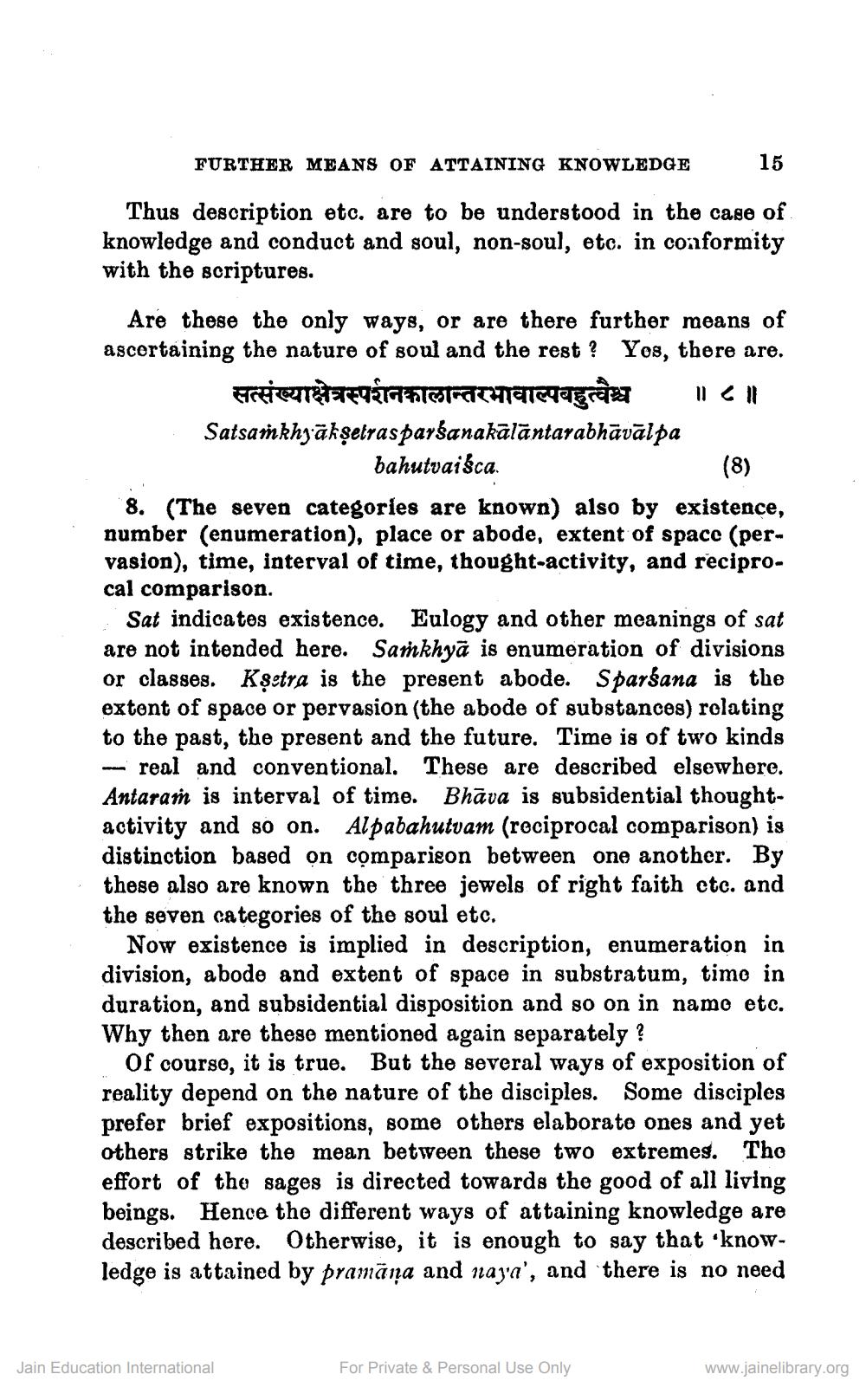________________
FURTHER MEANS OF ATTAINING KNOWLEDGE
15
Thus description etc. are to be understood in the case of knowledge and conduct and soul, non-soul, etc. in conformity with the scriptures.
Are these the only ways, or are there further means of ascertaining the nature of soul and the rest ? Yos, there are.
___ सत्संख्याक्षेत्रस्पर्शनकालान्तरभावाल्पबहुत्वैश्च ॥८॥ Satsamkhyākşetrasparśanakālāntarabhāvālpa bahutvaiếca.
(8) 8. (The seven categories are known) also by existence, number (enumeration), place or abode, extent of space (pervasion), time, interval of time, thought-activity, and reciprocal comparison.
Sat indicates existence. Eulogy and other meanings of sat are not intended here. Samkhyā is enumeration of divisions or classes. Kşetra is the present abode. Sparśana is the extent of space or pervasion (the abode of substancos) rolating to the past, the present and the future. Time is of two kinds - real and conventional. These are described elsewhere. Antaram is interval of time. Bhāva is subsidential thoughtactivity and so on. Alpabahutvam (rociprocal comparison) is distinction based on comparison between one another. By these also are known the three jewels of right faith etc. and the seven categories of the soul etc.
Now existence is implied in description, enumeration in division, abode and extent of space in substratum, timo in duration, and subsidential disposition and so on in namo etc. Why then are these mentioned again separately?
Of course, it is true. But the several ways of exposition of reality depend on the nature of the disciples. Some disciples prefer brief expositions, some others elaborate ones and yet others strike the mean between these two extremes. The effort of the sages is directed towards the good of all living beings. Hence the different ways of attaining knowledge are described here. Otherwise, it is enough to say that knowledge is attained by pramāra and naya', and there is no need
Jain Education International
For Private & Personal Use Only
www.jainelibrary.org




